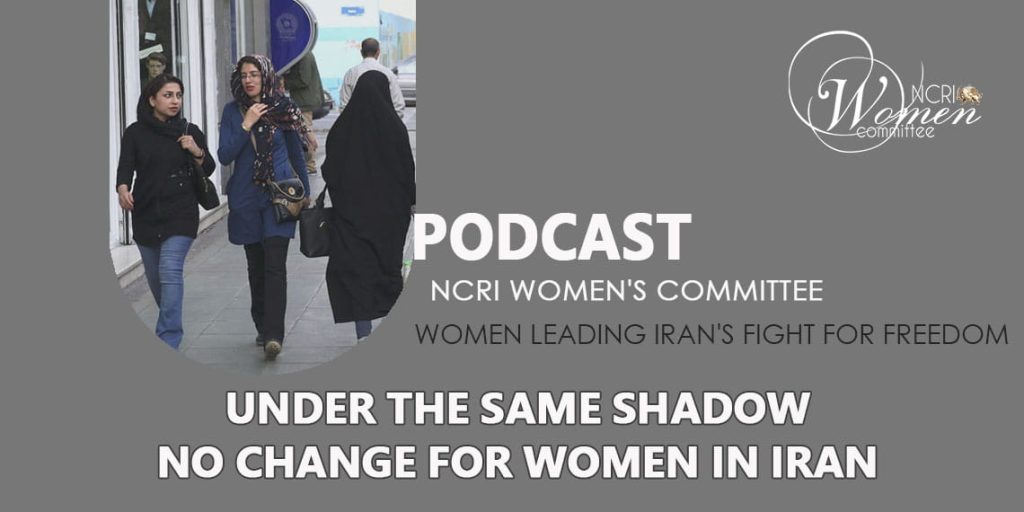Recently, the Iranian regime had a new president, Masoud Pezeshkian, in an election boycotted by a staggering 91 percent of the Iranian population. The big question we’re exploring today is: will this bring any change for the women in Iran? That’s what we’ll be delving into in this episode.
Who is Masoud Pezeshkian and what’s his background?
Masoud Pezeshkian, a general surgeon by profession, was born in 1954 in Mahabad, West Azerbaijan. His political career spans several decades, featuring some high-profile positions within the Iranian regime. Before becoming president, he was best known for his role as the Minister of Health under Mohammad Khatami. Pezeshkian has also served five terms in the mullahs’ parliament from 2008 to 2024.
He is referred to as a reformist? Is that true or just a myth?
Well, some people have tried to paint him as a reformist figure. But if you take a closer look at his background, actions, and stances, it tells a different story. He’s been a staunch supporter of the regime’s core principles and practices from the start, especially when it comes to women’s freedom of choice. The most telling sign is his proclamation that he won’t change course and will continue the policies of his notorious predecessor, Ebrahim Raisi.
On June 10, he said, “I am telling you, we must continue on the same path; we are not supposed to change course. When we constantly change direction and strategy, and issue new directives every day, naturally, we won’t achieve the goals and growth envisioned by the Supreme Leader.”
As you can see, he’s there to enforce the policies and plans dictated by the mullahs’ supreme leader, Ali Khamenei, who has ordered the deaths and imprisonment of thousands of Iranian protesters and dissidents. The hard truth is that under this clerical regime, where everything is controlled by a single medieval cleric they call the supreme leader, there can be no real reform or democratic change. Even the elections are just spectacles to legitimize the mullahs’ tyrannical rule.
So the recent boycott of the so-called elections in Iran, both during the parliamentary elections and the two rounds of presidential elections, is very telling of the Iranian people’s rejection of the entire regime. It also shows that the people of Iran are convinced there is no difference between hardliners and reformists in this regime. As they chanted in the 2017 protests, the game is over.
We also remember the glorious 2022 nationwide uprising in Iran, where people across the country called for the regime’s overthrow. Thousands of courageous young people, both women and men, were killed and maimed by security forces, and the pain is still fresh for the people of Iran. Let’s not forget the major uprisings in 2017, 2018, 2019, 2020, and 2022, all calling for regime change. In all these protests, women played a major role, and many lost their lives.
So, clearly, this regime rules by brute force. When Pezeshkian says he’s not there to change the plans and strategy, it’s clear he will continue to enforce the same ruthless measures as his predecessor. Ebrahim Raisi was a mass murderer, directly involved in the massacre of 30,000 political prisoners in 1988 and the killings of thousands of protesters in more recent years.
Can we expect Masoud Pezeshkian to be more moderate on women’s issues? Has he expressed his views on this?
In his recent election campaign, he bluntly declared that he’s not going to change anything. He stated that everything is determined by Khamenei, and straying from these directives is a red line for him. Pezeshkian also believes that “women and girls should be educated by men, the clergy, and mosques.”
In a 2017 interview, he proudly admitted to being among the first to prohibit the entry of unveiled women and girls into universities and hospitals. He boasted about implementing this measure in 1979, even before the mandatory hijab policy was officially introduced. In the interview, Pezeshkian said, “After the revolution, we were tasked with purging the universities and hospitals. When I accepted this responsibility, I issued a directive that required women to adhere to some guidelines. This decision was made even before the hijab policy was introduced. It was only two months after my directive that the government announced that these measures must be enforced.”
Oh, what a reformist! His early actions clearly show his long-standing commitment to the regime’s restrictive policies towards women. What specific actions could Masoud Pezeshkian take to prove he’s a genuine reformist leader?
If Pezeshkian truly aims to demonstrate his reformist credentials and distinguish himself from his predecessors, he should abolish the compulsory hijab and disband all patrols that subject hundreds of women to violence and torture daily. Additionally, he should abolish the death penalty and all forms of inhuman punishments, such as torture, flogging, limb amputation, eye-gouging and etc. He should release all political prisoners and allow international investigations into Iranian prisons. Furthermore, lifting restrictions and internet filtering would be crucial steps among dozens of other steps to alleviate the suffering of the Iranian people.
You mentioned he served as Health Minister. Can you give examples of his performance in that role?
A: Absolutely. There’s a significant episode from 2003 when Pezeshkian was Minister of Health. On June 23, 2003, Zahra Kazemi, an Iranian Canadian photojournalist, was arrested and tragically died in custody 18 days later after being tortured and raped. Despite international outcry, Pezeshkian supported the regime’s false narrative, claiming there were no signs of foul play when he personally examined her body. His actions contributed to blocking an independent international investigation into her death.
